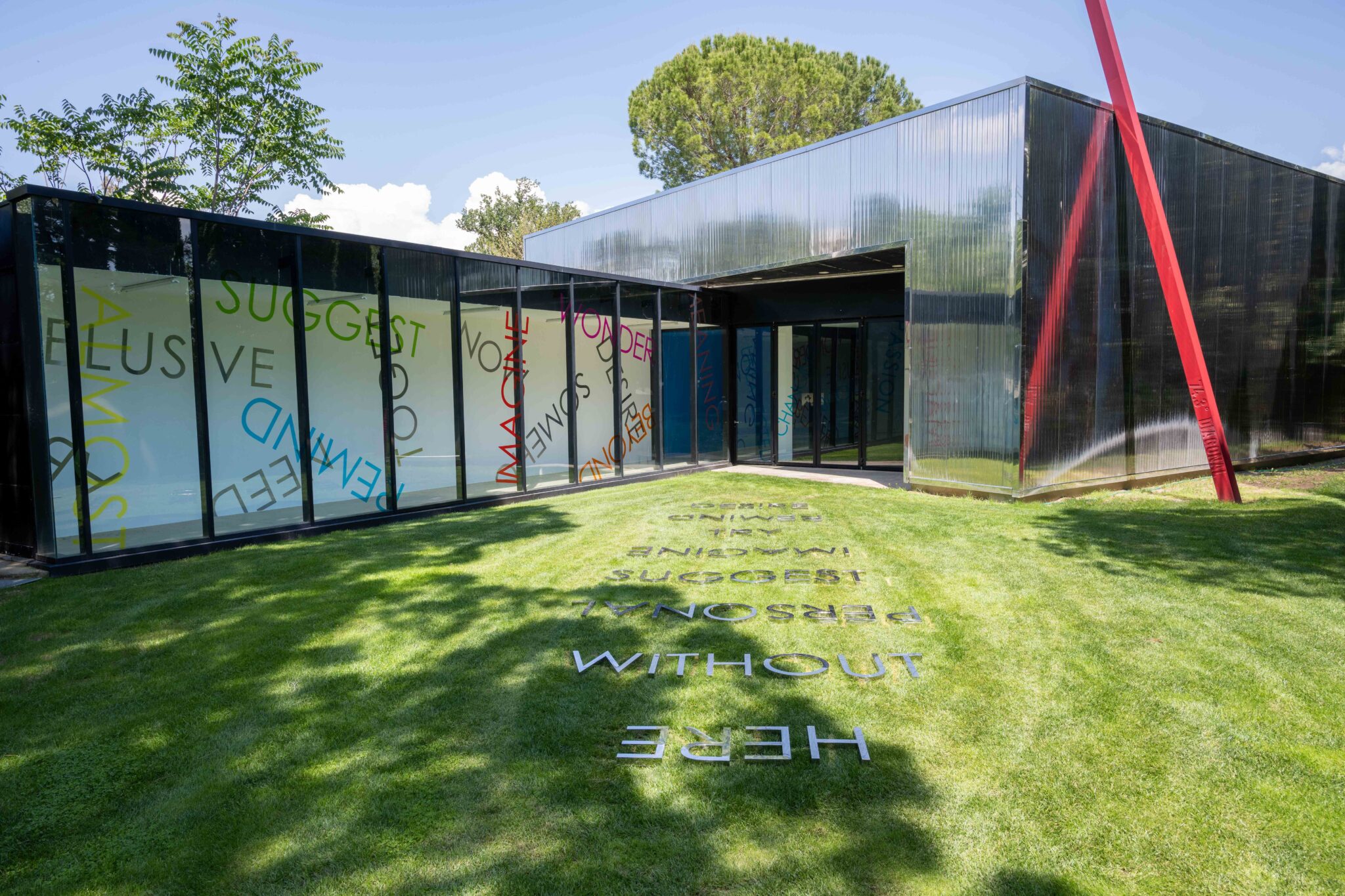Robert Barry
Robert Barry, considered one of the pioneers and the most representative artists of the Conceptual Art movement, was born in New York City in 1936 and completed his B.F.A., M.A. at Hunter College, The City University of New York. He lives and works in New Jersey.
Around the middle of the ’60s, Barry starts investigating the space around the canvas as well as the space within and the placement of the work in the exhibition context as a primary component of the artistic operation. Transcending the physical limitations of space and material, Barry has produced non-material works of art, installations, and performance art using a variety of otherwise invisible media (including radio waves and telepathy), challenging what would be accepted as “typical” artistic practice or experience. The artist questions the limits and the true nature of perception, our senses possibilities in relation with often unknown and intangible elements.
In the early ’70s Barry decides to focus on the word, as a unique vehicle of meanings and privileged tool of communication. The words in capital letters, painted on a canvas, written on walls or surfaces, printed on paper, projected on slides or carved, evoke narrative and inspire contemplation. Fundamental for the artist is the specialization of the word, the relationship between this and the emptiness around it.
Barry encourages free association of meaning to his works. Faced with a great variety of meanings and signifiers, the fundamental constant of all his research remains the fact that between his mind and the public’s gaze, there is a passing of ideas and concepts, not pre-established and intentional messages: a point of arrival and a departure that becomes the real creative engine of his work. To Robert Barry “art is a language and has roots in the language”.
His work has been included in epoch-making exhibitions such as Live In Your Head: When Attitudes Become Formcurated by Harald Szeemann at the Kunsthalle Bern and The Institute of Contemporary Art, London (1969) and Documenta V (1972). Since then, he has shown in innumerable important exhibitions all over the world including the landmark show, Reconsidering the Object of Art at LA MoCA (1995).
From the early 1970s, Barry has been the subject of various solo shows at important venues including the Tate Gallery, London (1972), the Stedelijk Museum, Amsterdam (1974), Museum of Conceptual Art, San Francisco, California (1978), The Renaissance Society, University of Chicago (1985) and the Stadtische Galerie im Lenbachhaus, Munich (2001). 2003/04 saw a comprehensive retrospective and accompanying catalgoue of his early work, A Place To Which We Can Come, Works from 1963 to 1975 at the Kunsthalle Nürnberg, Nürnberg, Germany and Aargauer Kunsthaus, Aarau, Switzerland.
Barry’s work is included in the permanent collections of renowned museums including the Museum of Modern Art, New York; the Hirshhorn Museum and Sculpture Garden, Washington, DC; the Solomon R. Guggenheim Museum, New York; the Musée d’Orsay, Paris; the Whitney Museum of American Art, New York; the Musée National D’Art Moderne, Centre Georges Pompidou, Paris; the Museum of Contemporary Art (MOCA), Los Angeles and the National Gallery of Art, Washington, DC.
Robert Barry, considered one of the pioneers and the most representative artists of the Conceptual Art movement, was born in New York City in 1936 and completed his B.F.A., M.A. at Hunter College, The City University of New York. He lives and works in New Jersey.
Around the middle of the ’60s, Barry starts investigating the space around the canvas as well as the space within and the placement of the work in the exhibition context as a primary component of the artistic operation. Transcending the physical limitations of space and material, Barry has produced non-material works of art, installations, and performance art using a variety of otherwise invisible media (including radio waves and telepathy), challenging what would be accepted as “typical” artistic practice or experience. The artist questions the limits and the true nature of perception, our senses possibilities in relation with often unknown and intangible elements.
In the early ’70s Barry decides to focus on the word, as a unique vehicle of meanings and privileged tool of communication. The words in capital letters, painted on a canvas, written on walls or surfaces, printed on paper, projected on slides or carved, evoke narrative and inspire contemplation. Fundamental for the artist is the specialization of the word, the relationship between this and the emptiness around it.
Barry encourages free association of meaning to his works. Faced with a great variety of meanings and signifiers, the fundamental constant of all his research remains the fact that between his mind and the public’s gaze, there is a passing of ideas and concepts, not pre-established and intentional messages: a point of arrival and a departure that becomes the real creative engine of his work. To Robert Barry “art is a language and has roots in the language”.
His work has been included in epoch-making exhibitions such as Live In Your Head: When Attitudes Become Formcurated by Harald Szeemann at the Kunsthalle Bern and The Institute of Contemporary Art, London (1969) and Documenta V (1972). Since then, he has shown in innumerable important exhibitions all over the world including the landmark show, Reconsidering the Object of Art at LA MoCA (1995).
From the early 1970s, Barry has been the subject of various solo shows at important venues including the Tate Gallery, London (1972), the Stedelijk Museum, Amsterdam (1974), Museum of Conceptual Art, San Francisco, California (1978), The Renaissance Society, University of Chicago (1985) and the Stadtische Galerie im Lenbachhaus, Munich (2001). 2003/04 saw a comprehensive retrospective and accompanying catalgoue of his early work, A Place To Which We Can Come, Works from 1963 to 1975 at the Kunsthalle Nürnberg, Nürnberg, Germany and Aargauer Kunsthaus, Aarau, Switzerland.
Barry’s work is included in the permanent collections of renowned museums including the Museum of Modern Art, New York; the Hirshhorn Museum and Sculpture Garden, Washington, DC; the Solomon R. Guggenheim Museum, New York; the Musée d’Orsay, Paris; the Whitney Museum of American Art, New York; the Musée National D’Art Moderne, Centre Georges Pompidou, Paris; the Museum of Contemporary Art (MOCA), Los Angeles and the National Gallery of Art, Washington, DC.
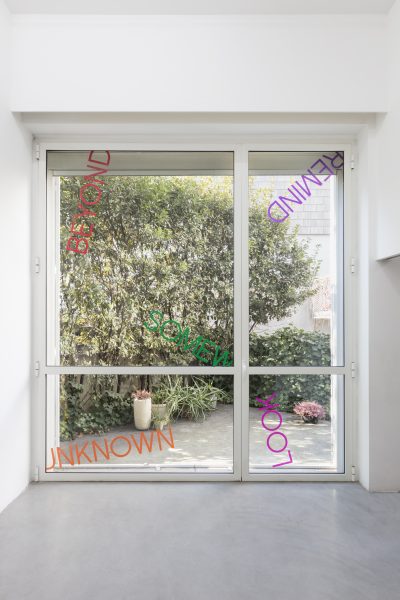 Untitled, 2018vinyl letters on glass
Untitled, 2018vinyl letters on glass
site specific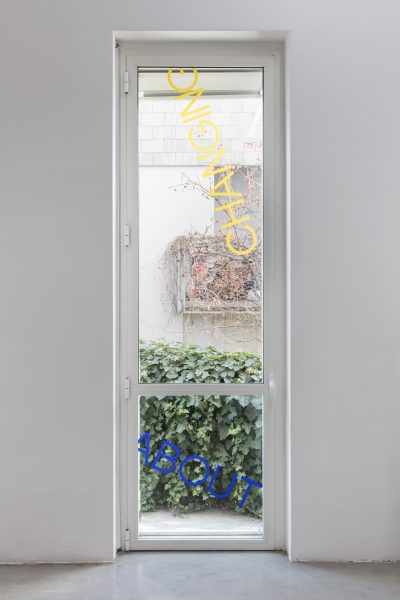 Untitled, 2018vinyl letters on glass
Untitled, 2018vinyl letters on glass
site specific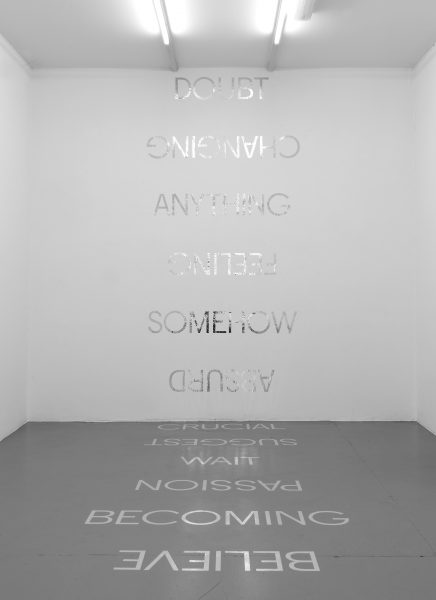 Silver Word List (Doubt…Believe), 2012vinyl letters, 12 words, installation for wall and floor
Silver Word List (Doubt…Believe), 2012vinyl letters, 12 words, installation for wall and floor
Variable dimensions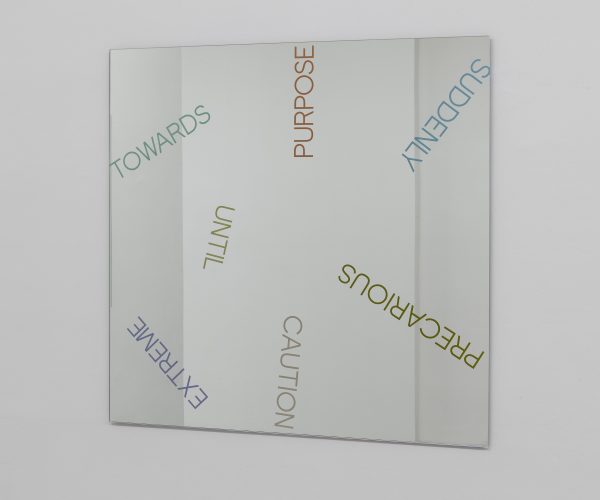 Mirrorpiece with multicolored words, 2011Mirror
Mirrorpiece with multicolored words, 2011Mirror
100×100 cm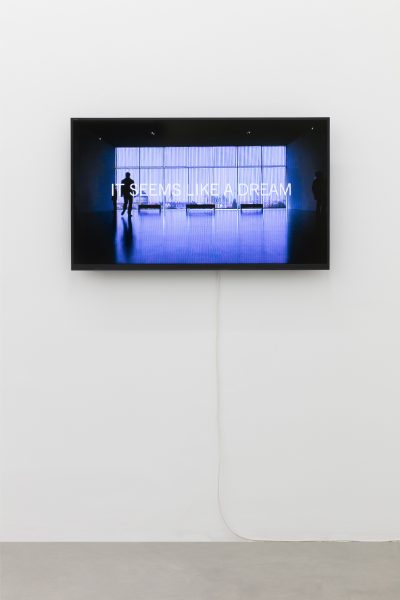 Forever, 2014single channel video,
Forever, 2014single channel video,
7'
Edition of 3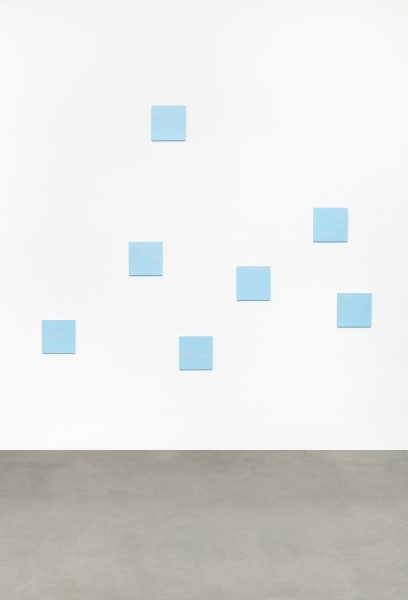 Untitled, 2018acrylic paint on wood
Untitled, 2018acrylic paint on wood
30,5×30,5 cm each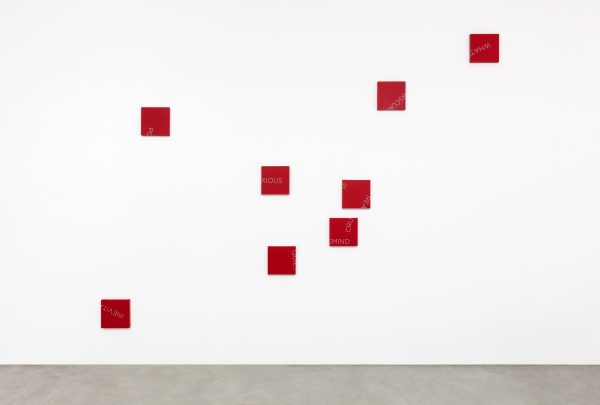 Untitled, 2018acrylic on canvas
Untitled, 2018acrylic on canvas
30×30 cm each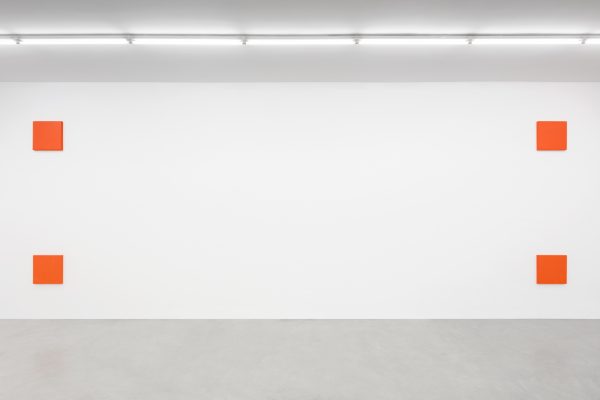 Untitled, 2018acrylic paint on canvas
Untitled, 2018acrylic paint on canvas
51,5×51,5 cm
each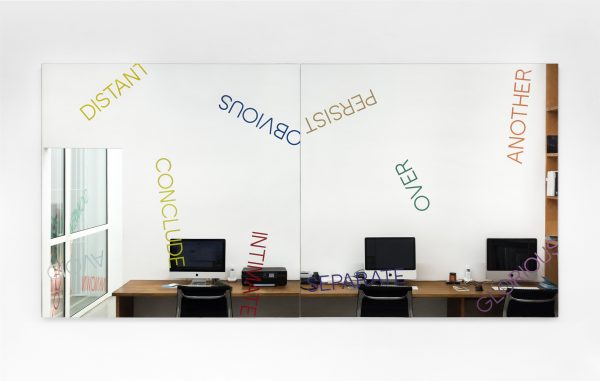 Mirror Diptych with Multicolored Words, 2011Mirror with vinyl letters, diptych
Mirror Diptych with Multicolored Words, 2011Mirror with vinyl letters, diptych
100×100 cm each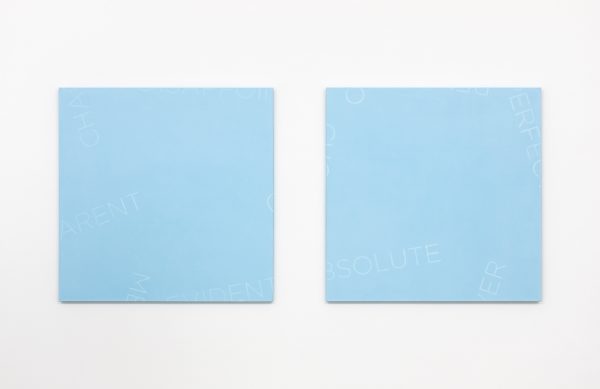 Untitled, 2018acrylic on canvas
Untitled, 2018acrylic on canvas
122×122 cm each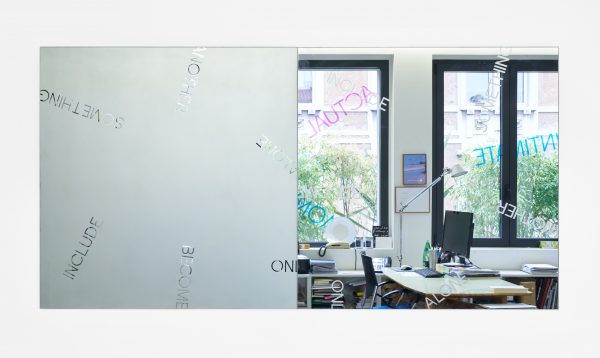 Mirror Diptych, 2005Sandblasted and reflecting mirror, diptych
Mirror Diptych, 2005Sandblasted and reflecting mirror, diptych
100×100 cm each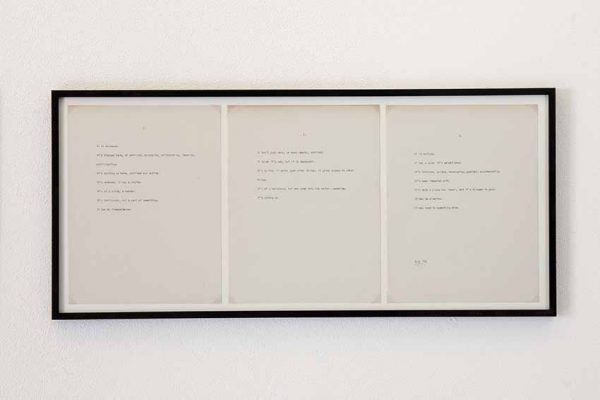 It is released, 1972typewriter ink on paper, three elements
It is released, 1972typewriter ink on paper, three elements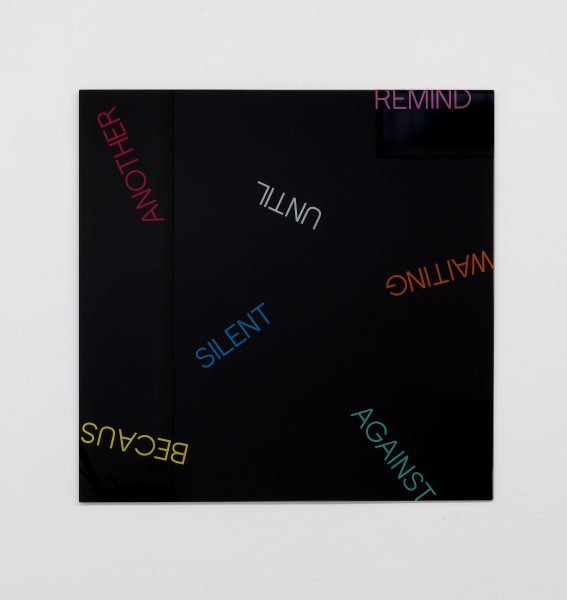 Black Mirrorpiece with Multicolored Words, 2011black mirror
Black Mirrorpiece with Multicolored Words, 2011black mirror
100×100 cm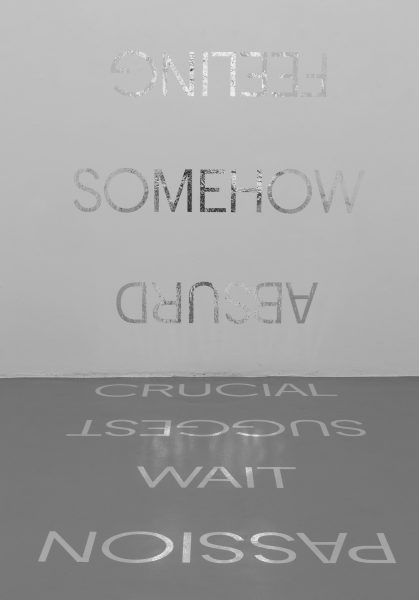 Silver Word List, Installation for wall and floor, variable dimension_vinyl letters, 6 words, installation for wall and floor
Silver Word List, Installation for wall and floor, variable dimension_vinyl letters, 6 words, installation for wall and floor
Variable dimensions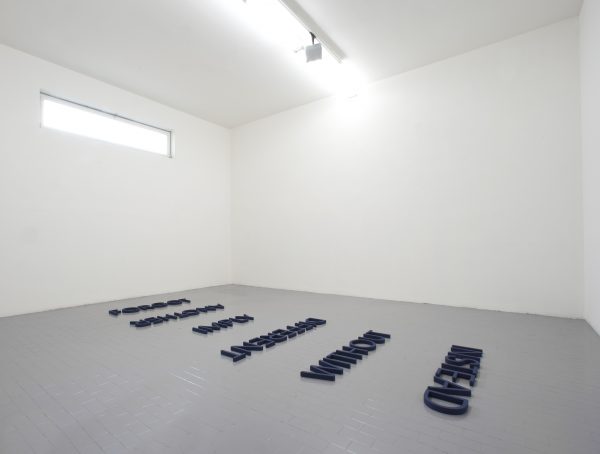 Cobalt Blue Word List, 2012floorpiece with six words
Cobalt Blue Word List, 2012floorpiece with six words
20 cm each letter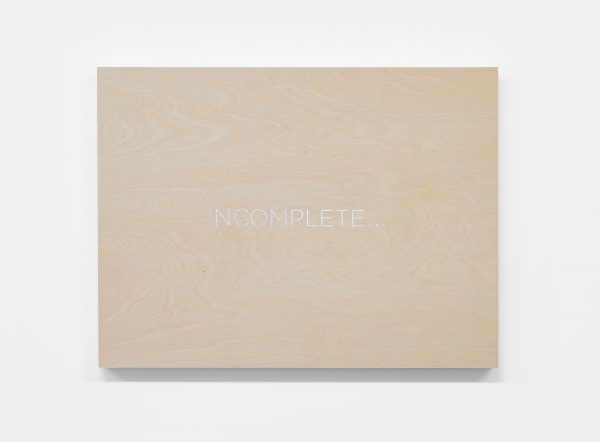 Incomplete…, 2014Silver vinyl letters on wood
Incomplete…, 2014Silver vinyl letters on wood
45,8×61×4 cm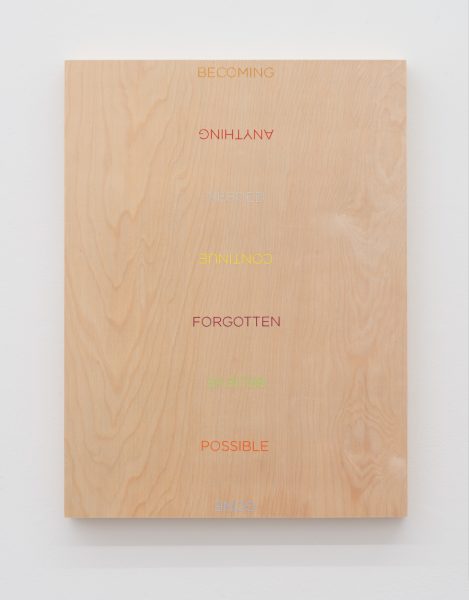 Becoming, anything, needed, …, 2015vinyl letters on wood, 8 words
Becoming, anything, needed, …, 2015vinyl letters on wood, 8 words
61×45,8×4 cm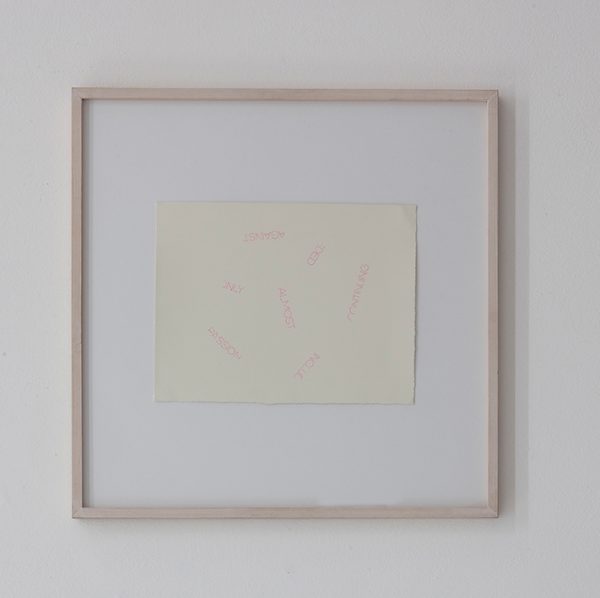 Untitled, 2005colored pencil on paper
Untitled, 2005colored pencil on paper
25×35 cm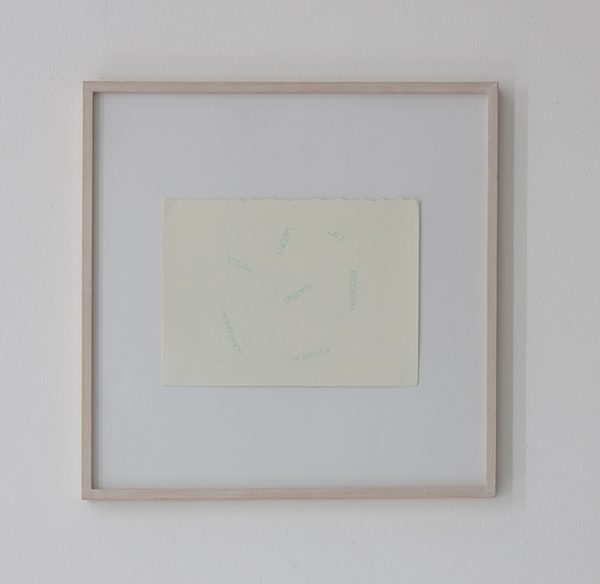 Untitled, 2005colored pencil on paper
Untitled, 2005colored pencil on paper
25×35 cm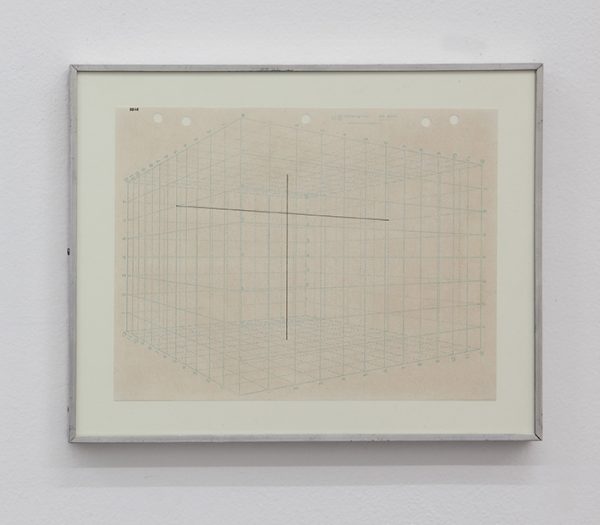 Study for 2 part string installation, 1968ink on graph paper
Study for 2 part string installation, 1968ink on graph paper
21,5×28 cm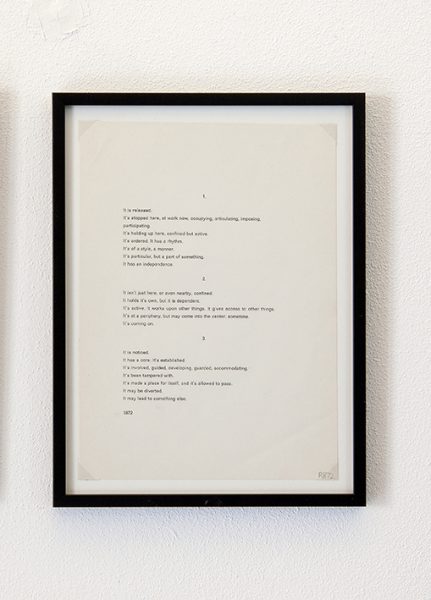 It is released statement, 1972ink on paper
It is released statement, 1972ink on paper
29,7×21 cm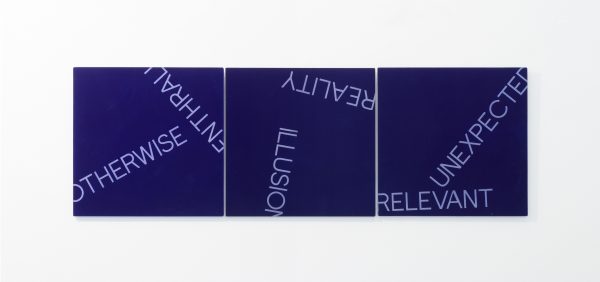 Blue Triptych, 2012Blue mirror, triptych
Blue Triptych, 2012Blue mirror, triptych
50×50 cm each






















